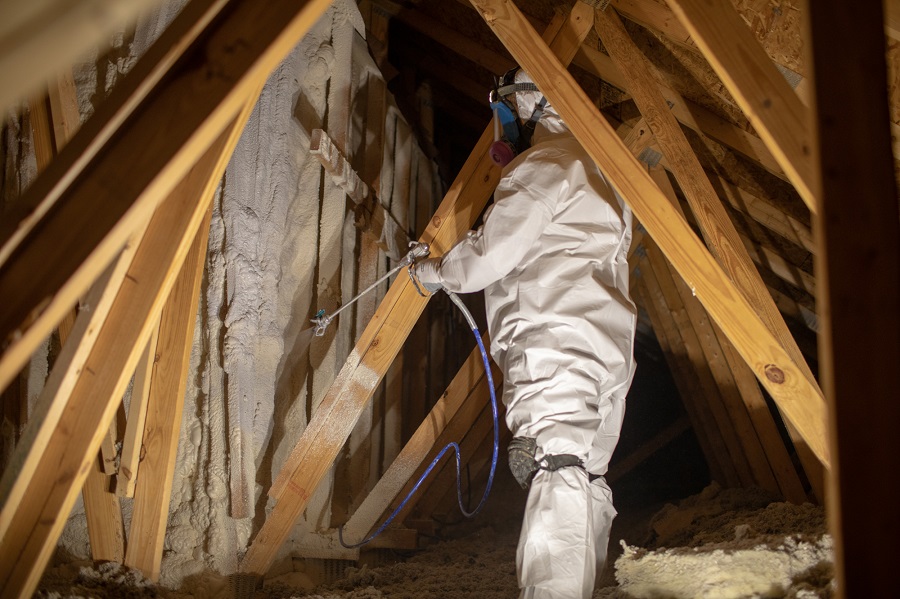What does R-value Mean?
Over the years, the number of insulation options on the market has vastly grown. Add to it energy efficient standards and recommendations of each insulation type and it can be difficult to make an educated decision without becoming overwhelmed. If you have begun looking for new insulation, you might be seeing a lot of information on R-value and wondering why it is important. Read on to find out what the R-value is and how it affects the temperature in your home.
What is R-value?
The “R” in R-value stands for resistance. The R-value is used to measure the resistance insulation materials have to heat flow. The higher the R-value, the stronger its insulation power.
How is R-value calculated?
Each type of insulation is rated to perform at a unique R-value based on its material makeup. Closed cell spray foam insulation is R-7 per inch and blown cellulose insulation is roughly R-3.5 per inch. To calculate the total R-value in an area you multiply the rated R-value for the material by the thickness of the material. For example, three inches of closed cell spray foam would be a total of R-21 which was calculated by multiplying 7×3; 7 for the unique R-value and then 3 for the thickness in inches.
What is a good R-value?
Different areas of the United States require different R-values due to their climates. To learn about a good R-value for your home, visit ENERGY STAR’s recommendations for home insulation. The ENERGY STAR recommendations are broken down based on zones. The colder state you live in, the higher the recommended R-value. Southern states, such as Florida, parts of Louisiana and Texas are in Zone 2 and require a lower R-value than Northern states. Michigan spans from zone 5 to zone 7. The highest R-value recommendations are the same for zones 5 through 8.
It is also important to note that the R-value is different for different areas of your home. The R-value for attic insulation is higher than the R-value for your walls or floor.
What are Michigan’s requirements for R-value?
Michigan falls into three different temperature zones based on ENERGY STAR’s recommendations. For attic insulation, the recommended R-value ranges from R-49 to R-60. If you have an attic with 3 to 4 inches of insulation, then your R-value is only R-11 to R-13, so you will need to add between R-39 and R-49 to achieve the ENERGY STAR recommended levels.
For attic insulation to reach an R-value of 49 for your attic, you would need approximately the following:
- Blown-in cellulose insulation: approximately 16 inches thick
- Closed cell spray foam insulation: 7 inches thick
- Fiberglass insulation: roughly 16 inches thick
For Michigan homes, blown-in cellulose insulation in attics is typically best. It allows for a better fit around the home’s structural pieces in the attic.
How do I know if my insulation’s R-value is high enough?
Newly built homes must meet the United States Department of Energy R-value standards. These standards did not become part of building codes until the 1970s though. So, if you are living in a home that was built prior to the mid-1970s and has not had any extensive renovations that would require you to upgrade your insulation, your R-value is likely below recommended standards. If your home is drafty and not at a consistent temperature throughout, your insulation might be to blame. Conducting a home energy audit can help determine where your home is lacking in insulation as well as other reasons your home may be uncomfortable. A home energy audit is the recommended first step to living in a comfortable home.
Learn more about your home’s insulation with Ecotelligent Homes.
Contact Ecotelligent Homes to conduct an energy audit to determine if your home’s insulation meets ENERGY STAR recommendations. Our team of experts can help improve the comfort of your home with proper insulation.
